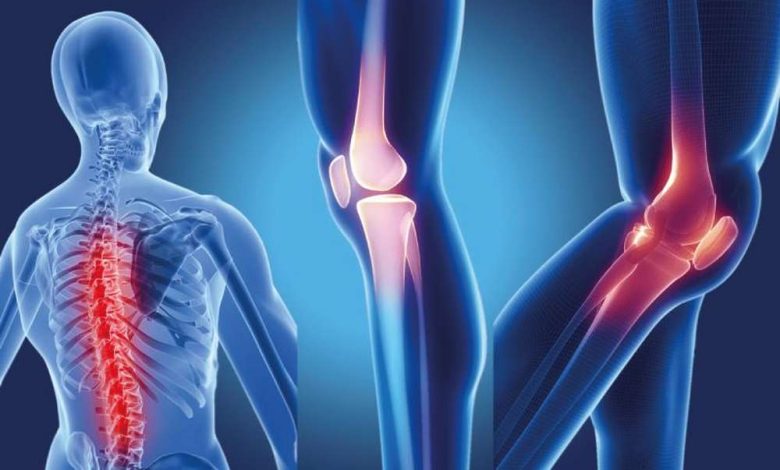Joint hypermobility: What's it, causes, symptoms, diagnostics, treatment, prevention

Hypermobile joints; Joint hypermobility; Loose joints; Hypermobility syndrome
What are hypermobile joints?
Hypermobility of the joints, also known as joint hypermobility syndrome, is a disorder, in which the joints of the body can move outside of the normal range of motion. This is a hereditary disease, affecting the connective tissues of the body, including ligaments and tendons. Joint hypermobility syndrome may be present in children and adults and may result in pain, instability and even dislocation.
Causes of joint hypermobility
Joint hypermobility syndrome is caused by a genetic mutation, affecting the connective tissues of the body. This mutation affects collagen production, squirrel, necessary for the strength and stability of connective tissues. As a result, people with joint hypermobility syndrome have weaker and more flexible ligaments and tendons..
Hypermobility joints are common in healthy and normal children.. This is called benign hypermobility syndrome..
For rare diseases, associated with joint hypermobility, relate:
- Clavicular cranial dysostosis (abnormal development of the bones of the skull and collarbone)
- Down's syndrome (genetic disease, in which a person 47 chromosomes instead of normal 46)
- Ehlers-Danlos syndrome (Group of hereditary diseases, characterized by excessive joint mobility)
- Marfan syndrome (connective tissue disorder)
- Mucopolysaccharidosis type IV (disease, in which the body lacks or lacks a substance, needed to break down long chains of sugar molecules)
Symptoms of joint hypermobility
Symptoms of Joint Hypermobility Syndrome can vary widely from person to person.. Some people may not have symptoms at all, while others may be in pain, instability and dislocations. Some of the most common symptoms of joint hypermobility syndrome include:
- Joint pain
- Joint instability
- Dislocations of the joints
- Pinching or pushing joints
- Fatigue
- Muscular weakness
- small bruises
- Recurrent injuries
When to see a doctor
If you are experiencing any of the above symptoms, it is important to seek medical attention. Joint hypermobility syndrome can lead to long-term joint damage, Therefore, it is very important to make an accurate diagnosis and prescribe appropriate treatment..
Questions, that your doctor may ask
When you visit your doctor, it, probably, ask you a series of questions, to determine, do you have joint hypermobility syndrome. Some of the questions, which they can ask, include:
- Are you experiencing joint pain or instability?
- Have you ever dislocated a joint?
- Do you have a family history of joint hypermobility syndrome??
- Are you experiencing fatigue or muscle weakness?
- Do you have other diseases?
Diagnosis of joint hypermobility
Diagnosing joint hypermobility syndrome can be challenging, because the symptoms may be similar to other disorders. Your doctor may perform a physical examination, to assess your joint's range of motion and look for signs of instability. He may also order imaging studies., such as X-ray or MRI, to assess the condition of your joints.
Treatment of joint hypermobility
Treatment for joint hypermobility syndrome depends on the severity of your symptoms.. Some people may not need any treatment at all., while others may need medication or physical therapy to manage symptoms. In some cases, surgery may be required to repair the joint., that has been damaged due to instability or dislocation.
Home treatment for joint hypermobility
There are several things, which you can make at home, to manage the symptoms of joint hypermobility syndrome. Some home treatments include:
- Regular exercise to strengthen the muscles around the joints.
- Use splints to support joints.
- Applying heat or ice to relieve pain and inflammation.
- Taking over-the-counter painkillers, e.g. ibuprofen
Prevention of joint hypermobility
Although joint hypermobility syndrome is a hereditary disease, you can take some steps, to reduce the risk of developing the condition or worsening symptoms. These include:
- Regular exercise to strengthen muscles and support joints.
- Maintain proper posture and body mechanics, to reduce stress on joints.
- Avoid activities, causing excessive stress on the joints, e.g. high impact sports.
- Follow a healthy diet, to support healthy connective tissues.
Conclusion
Joint hypermobility syndrome is a condition, which affects the connective tissues of the body, leading to, that the joints can move outside of the normal range of motion. Although it is a hereditary disease, which cannot be cured, there are treatments, to manage symptoms and prevent long-term joint damage. If you experience joint pain or instability, it is important to seek medical attention, to receive an accurate diagnosis and appropriate treatment. By following a healthy lifestyle and exercising regularly, you can reduce your risk of developing joint hypermobility syndrome or worsening symptoms.
Used sources and literature
Ball JW, Dains I, Flynn YES, Solomon BS, Stewart RW. Musculoskeletal system. In: Ball JW, Dains I, Flynn YES, Solomon BS, Stewart RW, eds. Seidel’s Guide to Physical Examination. 10th ed. St Louis, MO: Elsevier; 2023:chap 22.
Clinch J, Rogers V. Hypermobility syndrome. In: Hochberg MC, EM Gravallese, Silman AJ, Smolen JS, Vine leaf ME, Weisman MH, eds. Rheumatology. 7th ed. Philadelphia, PA: Elsevier; 2019:chap 216.
